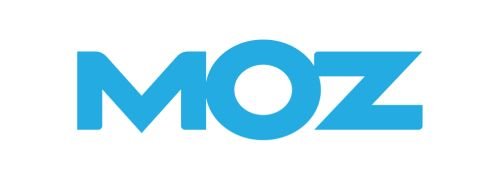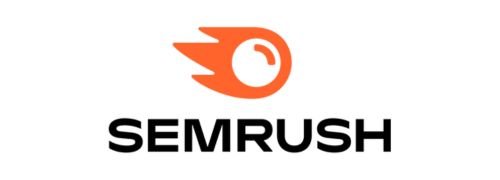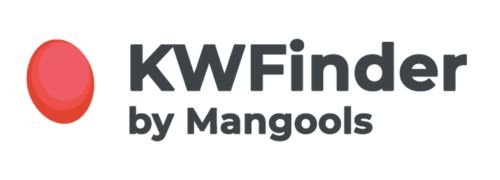Avoid SEO Pitfalls: Negative Factors That Can Harm Your Website Ranking!
In the digital landscape we inhabit today, website ranking and visibility are everything. If you’re a blogger, website owner, or marketer in the e-commerce space, you are likely competing with countless others striving for the same audience. This is where Search Engine Optimization (SEO) comes into play.
So, what exactly is SEO? Simply put, SEO optimizes your website to enhance its visibility in search engine results pages (SERPs). When done correctly, it can increase rankings on search engines like Google, Bing, and Yahoo, attracting more organic traffic to your site. But SEO is more than just a collection of tactics; it’s a holistic approach to making your online presence as compelling, user-friendly, and relevant as possible.

Why is SEO Important?
- Increased Visibility: Imagine a beautifully designed website stuffed with high-quality content, but what’s the point if no one can find it? SEO helps you climb the ranks to ensure your site is seen and visited. According to studies, around 75% of users never scroll past the first page of search results, meaning you’re invisible if you’re not there.
- Trust and Credibility: People trust search engines. High-ranking websites often foster greater confidence among users. When your site appears at the top of the search results, it signals that you are a relevant and credible source in your field. This is crucial, particularly for bloggers and e-commerce sites striving to build their brand reputation.
- Cost-Effective Marketing: Unlike pay-per-click (PPC) advertising, which requires ongoing investment to maintain traffic, SEO helps you attract organic visitors – meaning they come to your site without an associated cost per click. Organic search generates more leads than paid search ads. For bloggers and marketers, this translates into significant savings while maximizing return on investment (ROI).
- Improved User Experience: SEO isn’t just about search engines; it’s about enhancing the overall experience for your visitors. A well-optimized website offers easy navigation, quick loading times, and relevant content, creating a better experience for your audience. This fosters engagement, which can lead to higher conversion rates.
- Targeted Traffic and Higher Conversion Rates: SEO allows for targeted efforts, catering to specific demographics based on keywords. This means you’re not just attracting visitors but focusing on users already interested in your offer. For e-commerce sites, this targeted approach means a higher likelihood of transactions and conversions.
- Competitive Advantage: A robust SEO strategy can set you apart from competitors in crowded markets. Many businesses still neglect SEO, which offers those who invest in it the potential to gain significant market share. For instance, an e-commerce store that utilizes SEO effectively can compete with its sector’s giants by catering to niche markets or specialized products.
Whether you’re a blogger sharing your passion, a small business owner trying to break into a larger market, or a digital marketer tasked with improving sales, understanding and implementing SEO is paramount. With the growing reliance on online platforms for information and shopping, the importance of effective SEO cannot be overstated. So let’s delve deeper into the advantages of adopting correct SEO practices to bolster your online presence and business growth.
Disclosure: BBWebTools.com is a free online platform that provides valuable content and comparison services. To keep this resource free, we may earn advertising compensation or affiliate marketing commissions from the partners featured in this blog.
Key Takeaways
- SEO is crucial for increasing visibility, building trust, and driving organic traffic to your website.
- Advantages of Effective SEO: Proper SEO implementation can enhance organic traffic, improve user experience, increase conversion rates, and keep a company competitive.
- Negative SEO Factors: Factors like slow page load speed, non-mobile-friendly design, duplicate content, and poor site architecture can negatively impact your website’s ranking.
- Utilize SEO Tools: Tools like Moz Pro, SEMrush, Ahrefs, Google Analytics, and Yoast SEO are essential for optimizing website performance and monitoring SEO health.
- Importance of Technical SEO: Regular technical audits help identify and resolve issues like crawl errors and broken links, which can improve your website’s ranking.
- Local SEO: Optimizing for local search is crucial for businesses offering local services. It ensures better visibility and attracts relevant traffic.
- Continuous SEO Efforts: SEO is an ongoing process that requires regular updates, monitoring, and adaptation to ensure sustained success and improved rankings.
Advantages of Correct SEO to Improve Website Ranking
Implementing effective SEO brings an array of benefits to your online strategy. Here’s a detailed breakdown of the key advantages to enhance your understanding:
Enhanced Organic Traffic
When you optimize for search engines, you set yourself up to attract organic traffic—visitors who find you through unpaid search results. According to data, organic search accounts for nearly 53% of all website traffic. Proper SEO will increase your site’s visibility, leading to more visitors and opportunities. This surge in organic traffic is crucial in improving your website ranking.
Built-In Trust and Credibility
Web users are more likely to trust search engines. When your website appears at the top of the SERPs, users instinctively regard it as a reliable source of information. A Nielsen study found that 70% of users trust organic search results over paid advertisements. High ranking boosts trust and solidifies your brand’s credibility in the eyes of potential customers.
Cost-Effectiveness
SEO is generally more affordable than traditional advertising methods. Once your website is optimized, the organic traffic generated continues without ongoing financial investment. This makes SEO a long-term solution for sustained visibility and growth, providing exceptional return on investment (ROI) compared to other marketing strategies. As ranking improves, so does your ability to compete effectively in your industry.
Improved User Experience (UX)
SEO strategies encourage better user experience through improved site architecture, faster loading times, and relevant content. Google recognizes the importance of UX, and websites that offer fantastic experiences often receive higher rankings. Enhancing user experience is integral to maintaining a high website ranking, leading to increased visitor engagement and satisfaction.
Higher Conversion Rates
Targeted SEO efforts bring highly qualified traffic to your website—people looking for exactly what you offer. This relevance translates to higher engagement rates and increased conversions. For an e-commerce site, this could mean more sales, while bloggers may see higher subscriptions. Focused keyword usage and optimized content significantly bolster your website ranking, allowing you to reach your desired audience more effectively.
Staying Competitive
As more businesses recognize the value of SEO, continuing to ignore it can leave you behind. By investing in SEO, you improve your visibility and gain an edge over competitors who may not be as tech-savvy or patient. Effective SEO strategies ensure your website ranking remains competitive, helping you capture market share even in crowded sectors.
By harnessing the power of SEO, you set yourself up for success, whether sharing your passion through a blog, running a successful e-commerce business, or assisting clients in enhancing their online presence. With this foundational knowledge, you are on the right path to avoiding those SEO pitfalls that could obstruct your visibility and success.
In the next section, let’s examine the negative factors that can negatively impact your website’s ranking!
Negative SEO Factors That Affect Website Ranking
Even the most meticulously planned SEO strategies can encounter challenges. Recognizing the negative factors that may impede your rankings is essential. Below, we’ve identified ten significant negative SEO factors, detailing their impacts, corrective measures, and valuable tools—including a website ranking checker – to resolve these issues.
Poor Keyword Selection
Impact:
Selecting the wrong keywords can undermine even the most robust content. If you target low-volume or irrelevant keywords, you risk not attracting an audience genuinely interested in your offerings. This can lead to lower search visibility and increased bounce rates, as users who find your content aren’t finding value.
How to Fix:
Conduct thorough keyword research using tools to evaluate search volume, competition, and relevancy. Ensure you’re targeting more specific long-tail keywords, which typically present excellent conversion rates.
Tools:
- Google Keyword Planner – A free tool that helps find relevant keywords and analyze their search volume.
- SEMrush offers keyword analysis features to help you understand keyword competition and search trends.
- Ubersuggest provides keyword suggestions, search volume, and SEO difficulty.
Start a 7-Day Free Trial with Ubersuggest
Thin or Duplicate Content
Impact:
Content that lacks depth (thin content) or is duplicated from other sources can lead to penalties by search engines. Search engines prefer unique, high-quality content that offers actual value to users. Websites with duplicate content may find themselves outranked by competitors producing superior content.
How to Fix:
Perform a content audit. Ensure every piece of content is original, informative, and relevant. If there is duplicate content, either rephrase and enhance it or consolidate similar posts into a comprehensive article.
Tools:
- Copyscape checks for plagiarism to help you identify duplicate articles.
- Screaming Frog – You can conduct site crawls to reveal thin or duplicate content on your site.
- Grammarly – Includes a plagiarism checker to ensure originality in your writing.
Slow Page Load Speed
Impact:
A slow website can significantly diminish user engagement and elevate bounce rates, as users tend to abandon sites that take too long to load. Since Google factors page speed into its website ranking criteria, a sluggish site can adversely affect your rankings and online visibility.
How to Fix:
Optimize images, reduce server response time, leverage browser caching, and minimize CSS and JavaScript files. Use tools to identify specific issues impacting load speed.
Tools:
- Google PageSpeed Insights – Analyzes your site’s performance and gives actionable recommendations.
- GTmetrix – Tests your site’s speed and offers insights on what can be improved.
- Pingdom – Provides detailed reports on your loading times and performance metrics.
Ignoring Mobile Optimization
Impact:
With mobile traffic accounting for more than half of all web traffic globally, a non-mobile-friendly site results in a poor user experience for mobile visitors. If users struggle to navigate your site on their smartphones, you’ll likely see decreased traffic and engagement, along with penalties from search engines.
How to Fix:
Employ responsive design to ensure that your website adapts seamlessly to various screen sizes, or create a mobile-optimized version of your site. Always test your design across multiple devices and browsers.
Tools:
- Google’s Mobile-Friendly Test – Tests whether your site is mobile-friendly and provides suggestions for improvements.
- BrowserStack – This allows you to check how your website looks on various devices and operating systems.
- Responsive Design Checker – It helps you see how your website performs across multiple device sizes.
FREE TRIAL links
Lack of Quality Backlinks
Impact:
Backlinks are a critical component of SEO, serving as votes of confidence from other websites. Without quality backlinks, your site’s authority and trustworthiness in your niche may suffer, leading to lower rankings. Conversely, having untrustworthy backlinks can harm your credibility.
How to Fix:
Engage in outreach efforts to establish relationships with reputable blogs and websites in your niche for guest posting or collaboration. Regularly audit your backlink profile to identify low-quality or toxic backlinks and disavow them if necessary.
Tools:
- Ahrefs – Offers comprehensive backlink analysis tools to assess link quality and identify opportunities.
- Moz Link Explorer – You can examine your backlink profile and find link-building opportunities.
- Google Disavow Tool -This tool helps you disavow harmful backlinks that you don’t want associated with your domain.
Poor On-Page SEO Practices
Impact:
On-page SEO involves optimizing individual pages to rank higher and earn relevant traffic. Neglecting on-page factors – such as meta titles, descriptions, and headers – limits website visibility and can lead to negative user experiences.
How to Fix:
Review and optimize each page’s title tags, headings, and meta descriptions to ensure they are descriptive and include targeted keywords. Also, use alt tags for images and keep URLs concise.
Tools:
- Yoast SEO – A WordPress plugin providing real-time suggestions for improvements on-page SEO.
- SEMrush On-Page SEO Checker – Offers tailored recommendations for improving on-page elements.
- Screaming Frog – Audits your website to identify on-page SEO issues effectively.
Not Utilizing Local SEO
Impact:
For businesses offering local services, neglecting local SEO can mean missing out on relevant traffic within your area. Failure to optimize local search can decrease visibility when potential customers actively seek nearby services.
How to Fix:
Optimize your Google My Business listing, use local keywords, and gain reviews from local customers. Ensure your NAP (Name, Address, Phone number) is consistent across all platforms.
Tools:
- Moz Local – Helps manage and optimize your local listings.
- Google My Business – Essential for improving local search visibility and managing your business profile.
- BrightLocal – Offers tools for local SEO, including citation tracking and reputation management.
Overlooking Technical SEO
Impact:
Technical SEO involves optimizing your website’s infrastructure, which affects how well search engines crawl and index it. Failing to address technical issues can result in lost visibility and traffic.
How to Fix:
Conduct regular technical audits to identify crawl errors, broken links, sitemap, and site architecture issues. Implement structured data markup to help search engines better understand your content.
Tools:
- Google Search Console – Monitors your site’s presence in Google results and alerts you to technical issues.
- Screaming Frog – Performs comprehensive technical SEO audits, identifying crawl issues and providing actionable insights.
- Sitebulb – A visual SEO audit tool that offers detailed reports on technical issues.
Poor Site Architecture
Impact:
A confusing site structure can lead to high bounce rates and difficult user navigation. If search engines struggle to navigate your site, your ranking could be negatively impacted, leaving valuable content hidden from users and search engines.
How to Fix:
Adopt a logical hierarchy for your website’s architecture with clear categories and subcategories. Implement breadcrumb navigation to enhance user experience and assist search engines in indexing.
Tools:
- MindNode – This helps you visually map out your website structure and categories.
- Screaming Frog – Audits your site architecture and provides insights for improvement.
- Google Search Console – Identifies sites’ crawl issues or errors affecting your site architecture.
Ignoring Analytics and Data Insights
Impact:
Failing to analyze your SEO performance and adapt based on data can result in missed opportunities for improvement and a lack of understanding of your audience’s behavior. Making decisions without data backing may lead to ineffective strategies that hurt your website’s ranking.
How to Fix:
Regularly review analytics data to identify trends, user behavior, and which pages perform well or poorly. Adjust your strategy based on insights gathered to ensure continuous improvement.
Tools:
- Google Analytics – A comprehensive tool for tracking site performance and user behavior.
- SEMrush – Offers analytical features to assess your overall SEO effectiveness and identify areas for improvement.
- Hotjar – Provides heatmaps and visitor recordings to help you see how users interact with your site.
Start a Free Hotjar Account Now
In conclusion, avoiding these common negative SEO factors is crucial for maintaining a strong online presence. By actively managing and addressing these issues, you enhance your website’s chances of ranking higher in search engine results and create a better user experience that can drive traffic, engagement, and conversions. Implementing and using the right tools will empower you on your SEO journey, enabling you to navigate the challenges ahead successfully.
Top 5 SEO Tools
In the dynamic world of SEO, leveraging the right tools can significantly differentiate between a mediocre and thriving online presence. Below, we’ve curated a list of the top five SEO tools, focusing on their features, key functionalities, and pricing. Each tool empowers bloggers, website owners, and online marketers with actionable insights and data, making optimizing their websites and improving rankings easier.
- Overview: Moz Pro is an all-in-one SEO software suite offering comprehensive tools for SEO professionals and beginners. Its intuitive interface makes it easy to navigate while providing powerful insights for search optimization.
- Key Features:
- Keyword Explorer: Discover new keyword opportunities and analyze their potential.
- Site Audits: Conduct a detailed evaluation of your site’s SEO health to identify technical issues.
- Rank Tracking: Monitor keyword rankings over time and evaluate your performance against competitors.
- Link Explorer: Analyze your backlink profile and discover new link-building opportunities.
- Pricing: It starts at $49/month, with various tiers offering more advanced features. New users can try it for 30 days for free.
- Overview: SEMrush is one of the most popular SEO tools on the market. It is notable for its extensive suite of features for improving online visibility through competitive research and keyword analysis.
- Key Features:
- SEO Audit Tool: Receive detailed site audits highlighting improvement areas.
- Keyword Magic Tool: Generate keyword ideas along with their search volume and competition levels.
- Traffic Analysis: Gain insights into competitor traffic trends and strategies.
- Content Optimization Tool: Get recommendations for optimizing existing content based on top-ranking pages.
- Pricing: Plans start at $139/month, with higher tiers providing additional features suited for larger businesses and agencies.
- Overview: Ahrefs is renowned for its powerful backlink analysis capabilities, making it a go-to tool for marketers interested in building and managing their link profiles effectively. It also offers robust site audit features.
- Key Features:
- Site Explorer: This tool analyzes the link strength of any URL and assesses the quality of backlinks pointing to it.
- Keywords Explorer: Research keywords to find the best opportunities across various search engines.
- Content Explorer: Discover top-performing content in your niche, allowing you to create competitive and engaging content.
- Site Audit Tool: Identify technical issues affecting your SEO performance with easy-to-understand reporting.
- Pricing: Plans start at $99/month and offer a range of features tailored to different user needs, with a trial option available.
Google Analytics
- Overview: Google Analytics is a free web analytics tool that tracks and reports website traffic and user behavior. Anyone serious needs to understand how their site performs and how users engage with content.
- Key Features:
- Traffic Analysis: Monitor visitor traffic sources, page views, user demographics, and geographic data.
- Behavior Flow: Visualize user journeys through your site, pinpointing how visitors navigate your content.
- Goal Tracking: Set and measure conversions based on predefined objectives (e.g., sign-ups, purchases).
- Custom Dashboards: Create specific reports and dashboards to monitor critical metrics in real time.
- Pricing: Free for most features, with premium offerings available through Google Analytics 360 for larger enterprises.
- Overview: Yoast SEO is a popular WordPress plugin that simplifies on-page SEO optimization for bloggers and website owners. It is beginner-friendly while still providing valuable features for more experienced users.
- Key Features:
- Readability Analysis: Offers recommendations to improve the readability of your content for users.
- Keyword Optimization: This feature allows you to specify target keywords for each post and provides suggestions for optimizing content accordingly.
- Snippet Preview: View how your page will appear in search results and make necessary adjustments to titles and meta descriptions.
- XML Sitemaps: Automatically generates XML sitemaps to help search engines index your site more effectively.
- Pricing: A free basic version is available, and a premium version offers additional features for $89/year.
These top five SEO tools can significantly enhance your website’s ranking and overall performance. From keyword research and site audits to traffic analysis and content optimization, each tool offers unique features tailored to different aspects of SEO. By leveraging these tools, bloggers, website owners, and marketers can make informed decisions and develop strategies that lead to higher rankings, increased organic traffic, and greater success in the digital landscape.
Actively exploring and implementing these tools can be the difference between struggling to get noticed and standing out in the crowded online marketplace. As you integrate these tools into your SEO strategy, remember that consistent monitoring and adaptation are key to maintaining and improving your website ranking in the ever-evolving world of search engine optimization.
Conclusions
Navigating the complexities of SEO can be daunting, but understanding its fundamental principles and avoiding common pitfalls is an essential first step. This guide has explored the importance of SEO, the advantages of implementing effective strategies, and the negative factors that could hinder your website’s performance. We also highlighted some of the top SEO tools perfect for bloggers, website owners, and digital marketers looking to enhance their online presence.
Taking control of your SEO journey means acknowledging that while it may require time and persistence, the rewards are undeniably worth the effort. Improved visibility, credibility, and engagement ultimately lead to increased traffic and conversions, which are critical for achieving your online goals.
Consider integrating one or more SEO tools into your strategy as you move forward. Whether you’re drawn to SEMrush’s comprehensive analysis, Ahrefs’s backlink prowess, or Yoast SEO’s user-friendly optimization, each tool offers unique features that can cater to your specific needs. Don’t hesitate to use free trials to find the best fit for you!
If you’re eager to learn more about SEO, we invite you to explore our other articles.
From advanced techniques and best practices to niche-focused strategies, we provide a wealth of resources to equip you with the insights and knowledge needed to dominate search rankings.
Start your journey toward SEO mastery today! Read more articles that delve into various aspects of SEO, and try out the most suitable SEO tool that can transform how you approach online visibility. With dedication, the right resources, and a little patience, you’ll be well on your way to reaping the numerous benefits of effective SEO. Happy optimizing!
FAQ
What is the purpose of SEO?
SEO aims to improve the visibility of a website in search engine results, driving more organic traffic.
How can I improve my website’s SEO?
Focus on quality content, keyword optimization, technical SEO, and user experience.
What are keywords?
Keywords are terms or phrases users enter into search engines to find information.
What is thin content?
Thin content refers to web pages with little or no valuable content, offering minimal information to visitors.
How important is mobile optimization for SEO?
It is essential that a mobile-friendly site can improve rankings significantly due to Google’s mobile-first indexing.
What is a backlink?
A backlink is a link from another website to yours, which can improve your site’s authority.
What is on-page SEO?
On-page SEO involves optimizing individual web pages to rank higher and earn more relevant traffic.
Can I do SEO myself?
Yes, many aspects of SEO can be self-taught. Various online resources and tools can help.
How long does SEO take to show results?
Results can take several weeks to a few months, depending on competition and the strategy’s effectiveness.
Is SEO a one-time process?
No, SEO is an ongoing process that requires regular updates and optimization.





